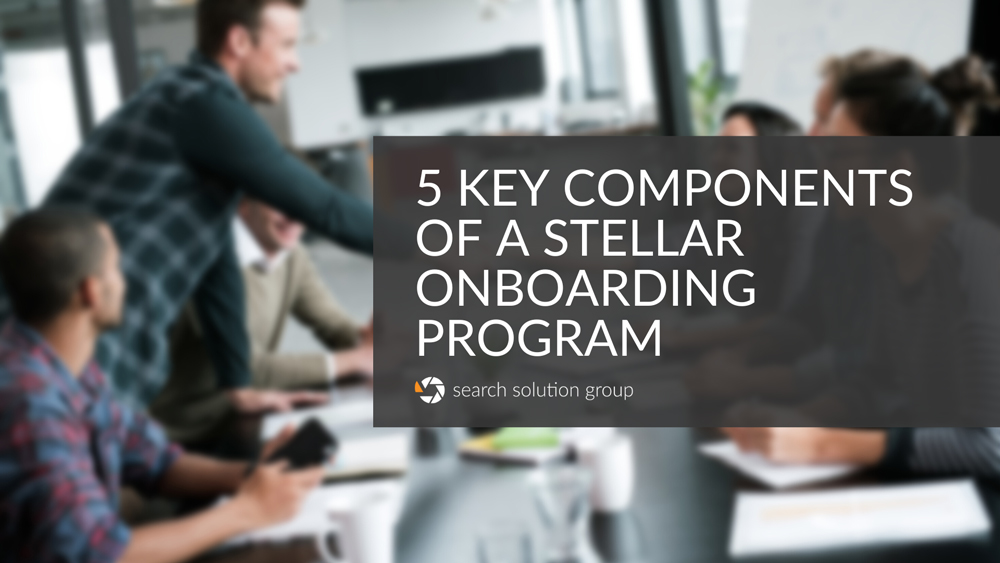Hiring is a core function of company growth — whether you need more salespeople, someone with marketing expertise, more technical personnel, or even new leadership. Regardless of the position you’re hiring for, onboarding is a critical step in getting them up to speed and productively on task in their given role. It doesn’t happen in one day, either, which necessitates a well-thought-out onboarding approach. The more seamless the transition into the company, the better the outcome for a candidate, their position, and the organization.
Don’t lose sight of the purpose of onboarding
Time-to-fill. Time-to-place. Time-to-productivity. Human Resources has plenty of metrics around hiring, and almost all of them depend on the efficacy of the organization’s onboarding process. How quickly can you get candidates vetted, tender them an offer, and put them in a position to start contributing? The answer hinges on how seamless your onboarding is.
Beyond kickstarting a new hire’s productivity, onboarding is also about acclimating them. A well-structured onboarding process ensures new hires are quickly integrated into the company culture, gain a clear understanding of their role and responsibilities, and have the support they need to do their job to the best of their abilities.
The importance of cohesive, supportive onboarding cannot be overstated. Gaps in the process can result in significant speed bumps that delay productivity, hinder integration, and even lead to attrition. The purpose of onboarding is to set new hires up for success. If it doesn’t, it’s the company that suffers.
Answer questions new hires are (and aren’t) asking
A strong onboarding program creates ideal conditions for new hires to start contributing to the organization’s goals and objectives. But what, exactly, separates a good onboarding experience from a bad one?
Often, the efficacy of an onboarding program is contingent on the expectations it sets. Do new hires feel like they have a clear understanding of their responsibilities? Do they know where they fit within the organization or within their department? Are they introduced to core processes? It’s not just about context, either — inclusion also matters. When new hires feel connected to their peers and supported by leadership, they’re more likely to succeed.
Empathy is key here. New hires are wading into an unfamiliar world, and it’s helpful for companies to recognize this perspective. What’s standard and obvious for you might not be apparent to them. Start from square one, and make onboarding a collaborative effort.
Optimize onboarding with these 5 tips
Ensuring a smooth and successful onboarding process requires development of a comprehensive onboarding program. This program should include a clear orientation to the company culture, expectations, policies, and training on the company’s products and services, processes, and systems.
Here’s a look at five cornerstone onboarding tips that can easily make or break a new hire’s experience:
- Define a clear timeline and structure for the onboarding program
- Provide mentors and define resources as well as support systems
- Carve out time to set role-specific expectations and make them clear
- Make onboarding a social, cultural, and integrative experience
- Create a dialog empowering new hires to ask questions
A clear and well-defined onboarding process sets expectations early, reducing confusion and misunderstandings and helping employees better understand the company culture from the outset. This allows new hires to feel welcomed into the fold and enables them to build relationships with colleagues, mentors, and managers, which can lead to better collaboration and teamwork.
By providing new hires with the resources, support, and guidance they need to succeed, companies can ensure they’re investing in their employees’ futures and creating a foundation for long-term success benefitting both sides.
Build a framework for onboarding success
With the right onboarding framework in place — and a willingness to reevaluate it constantly for improvement — companies can overcome one of the biggest hurdles on the road to success: attracting and retaining talent. When employees feel welcome, connected, and informed from Day One, they’re put in a better position to succeed. It’s up to every company to identify the steps needed to accomplish this task and repeat them, regardless of how many people they hire or what positions they’re filling.
Discover your perfect candidate at searchsolutiongroup.com.






